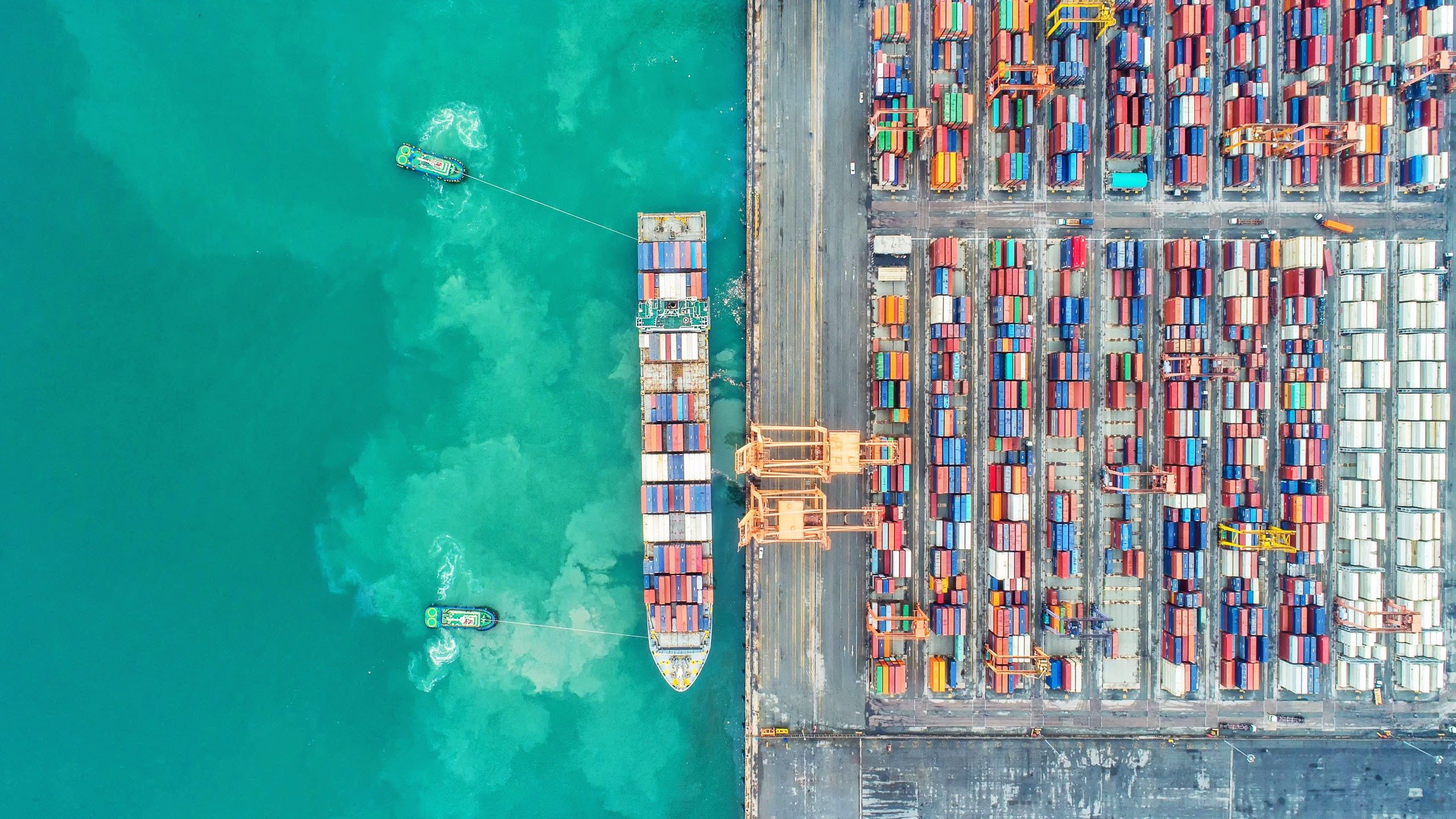Outline
- All Members should refer to this circular as the short deadlines involved make action, where applicable, extremely urgent.
-
The United States Automated Manifest System (AMS) regulations take effect on the 4th March 2004.
-
These regulations apply to all ocean carriers and non-vessel operating common carriers (NVOCCs) shipping cargoes to all US ports.
-
This circular explains the mandatory reporting requirements of AMS in respect of bulk, break-bulk and other cargoes.
-
Details of the compulsory Standard Carrier Alpha Code (SCAC) and International Carrier Bond (ICB) are also provided.
Actions
- Members should urgently establish whether these regulations apply to them.
-
If the regulations do apply Members should proceed with the actions summarised on page 6 of this circular.
-
If Members require any clarification of this circular they should contact the Club immediately.
TO THE MEMBERS
USA - NEW AUTOMATED MANIFEST SYSTEM REGULATIONS
Members operating ships which trade to the United States will shortly be required to comply with new Automated Manifest System (AMS) regulations. In order to do so, those concerned will also need to obtain a Standard Carrier Alpha Code (SCAC) and an International Carrier Bond (ICB). The requirements enter into force on 4th March 2004. In view of the very short lead time, it is important that Members take action without delay.
Background
The US Maritime Transportation Security Act was introduced to improve the security of cargo shipments entering or leaving the United States by sea, air, rail or truck. The Act passed into law in 2002 and requires the mandatory submission of cargo manifest information by electronic means. The US Bureau of Customs and Border Protection (CBP) was charged with implementing the new law and a Final Rule was published a short time ago setting out the details.
Application
The AMS regulations will affect all ships bringing cargo into US ports including all US non-contiguous and island territories, even if the cargo is not to be discharged in the US and is to be consigned to foreign ports. It is possible that the regulations may not apply in situations where a customs entry is not currently required (eg Louisiana Offshore Oil Port (LOOP), ship to ship transfer operations offshore), but this issue remains in need of clarification. An AMS declaration is also required for cargo loaded in US ports.
Carrier
The SCAC, ICB and AMS reporting requirements apply to ocean Carriers and to Non-Vessel Operating Common Carriers (see below). CBP has defined the Carrier as “the entity that controls the conveyance” such as the head owner or the bareboat charterer. It is thought that a manager may be construed as being the Carrier if it is clear that the manager has assumed responsibility for the operation of the ship, but this should be verified with CBP in the first instance. It is less clear whether a time charterer may be deemed to be the Carrier, and CBP may ask to see a copy of the charter party in order to reach a decision.
Although a time charterer may continue to issue bills of lading for and on behalf of the master, owner or bareboat charterer, the Carrier will be responsible for ensuring that cargo manifest declarations are made via AMS. It is essential to note that the Carrier’s SCAC must be used on all bills of lading irrespective of the issuing party, representing a major departure from current practice.
A list of Carriers who are already AMS participants may be found at:
Non-Vessel Operating Common Carrier (NVOCC)
A Non Vessel Operating Common Carrier is defined in 19 CFR §4.7(b)(3)(ii) as “a common carrier that does not operate the vessels by which the ocean transportation is provided, and is a shipper in its relationship with an ocean common carrier. The term ‘non-vessel operating common carrier’ does not include freight forwarders…”.
Authorised NVOCC’s are permitted to make AMS declarations and may issue bills of lading under their own SCAC. The ICB requirement still applies. However, the owner or bareboat charterer will still need to issue a master bill of lading to the NVOCC on which the ocean Carrier’s SCAC must be used.
Many slot charterers have acquired NVOCC status, but it seems unlikely that a time or voyage charterer in the dry or liquid bulk trade will be considered to be a “common carrier”.
Details of whom to approach with the aim of becoming an authorised NVOCC are shown on the following web page:
http://www.cbp.gov/ImageCache/cgov/content/import/carriers/nvoccs_5fams_2epdf/v1/nvoccs_5fams.pdf
A list of authorised NVOCC's may be found at:
Automated Manifest System (AMS)
As of 4th March 2004 the Carrier must ensure that all declarations relating to incoming cargo are submitted to CBP via the Automated Manifest System. Depending on the type of cargo or whether it is Foreign Remaining On Board (FROB) cargo, an AMS declaration is to be made either 24 hours before loading or at least 24 hours before arrival at the first US port. In the former case if nothing is heard by return from CBP in the ensuing 24 hours, then it may be assumed that the cargo may be loaded without violation of the new AMS requirements. If the duration of the voyage is expected to be less than 24 hours, the details are to be submitted on departure from the final port of loading.
Dry Bulk and Liquid Bulk Cargoes
For dry bulk and liquid bulk cargoes an AMS submission is to be made at least 24 hours before arrival at the first US port. In the case of FROB bulk cargo the AMS declaration should be made 24 hours before loading. Bulk cargo is defined by CBP as:
“Homogenous cargo that is stowed loose in the hold and is not enclosed in any container such as a box, bale, bag, cask, or the like. Such cargo is also described as bulk freight. Specifically, bulk cargo is composed of either: (a) free flowing articles such as oil, grain, coal, ore, and the like which can be pumped or run through a chute or handled by dumping; or (b) uniform cargo that stows as solidly as bulk cargo and requires mechanical handling for lading and discharging.”
CBP has also stated that, subject to certain limitations, bulk cargo may include steel coils, steel plates, wire rods, metal ingots, sawn timber, wood pulp, newsprint and various perishable goods.
Break Bulk Cargo
For break bulk cargo an AMS declaration is to be made 24 hours before loading. However, an application may be lodged for an exemption which, if granted, will allow the Carrier to file an AMS declaration 24 hours before arrival at the first US port in the same manner as bulk cargo. In the case of FROB break bulk cargo the AMS declaration should be made 24 hours before loading. Break bulk cargo is defined by CBP as:
“Cargo that is not containerised and that cannot be classified as “bulk” cargo under the above definition. For example, new and used vehicles will be classified as break bulk cargo.”
“It is important to note that the difference between bulk and break bulk is based not only on the type of cargo, but also on the way in which the cargo is stowed or loaded. For example, bananas stowed loosely in a hold (not in boxes or containers) will be considered bulk. Palletized boxes of bananas loaded directly into a hold (but not loose or containerized) will be considered break bulk.”
Carriers of break bulk cargo wishing to apply for an exemption should contact:
Border Targeting and Analysis, Room 5.4-D
1300 Pennsylvania Avenue NW
Washington DC 20229
Phone: +1 202 927 6060
Fax: +1 202 927 1435
Applications may take two to three weeks to process and should include the following information:
- The Carrier's IRS number (if applicable);
-
The source, identity and means of packaging or bundling of the commodities being shipped;
-
The ports of call both foreign and domestic;
-
The number of vessels the carrier uses to transport break bulk cargo;
-
The names of the vessels and their IMO numbers;
-
A list of the Carrier’s importers and shippers, identifying any who are members of the C-TPAT (Customs - Trade Partnership Against Terrorism) programme.
Cargoes Other than Bulk and Break Bulk
For all other types of cargo, including containerised goods, the Carrier's existing obligation to file an AMS declaration 24 hours prior to loading at a foreign port remains unchanged.
AMS Submission Details
All AMS submissions are to include the following information:
- The last foreign port before the vessel departed for the United States;
-
The carrier Standard Carrier Alpha Code (SCAC);
-
The carrier assigned voyage number;
-
The date the vessel is scheduled to arrive at the first US port;
-
The numbers and quantities from the carrier’s ocean bills of lading;
-
A precise description of the cargo (or the Harmonized Tariff Schedule number under which the cargo is classified) and the weight of the cargo;
-
Shipper’s name and address or identification number;
-
Consignee’s name and address or identification number, or where goods are consigned to order, the “Notify Party” details;
-
Vessel name, flag and IMO number;
-
The first foreign port where the carrier takes possession of the cargo destined for the United States;
-
The foreign port where the cargo is laden on board;
-
Internationally recognised hazardous material code when such materials are being shipped;
-
Container numbers (for containerised shipments);
-
The seal numbers for all seals affixed to containers.
CBP Form 1302 is to be completed in electronic format and filed along with the AMS declaration and may be accessed at:
forms.customs.gov/customsrf/getformharness.asp
AMS Reporting Methods
The Carrier may purchase and utilise compatible AMS software for this purpose. For further information see “Getting Started with AMS” at:
http://www.cbp.gov/xp/cgov/import/operations_support/automated_systems/ams/getting_started.xml
Alternatively, and for a fee, the Carrier may submit the information through a third party AMS service provider. The Carrier’s agent or representative may forward the cargo manifest details to the AMS service provider for onward transmission, but the Carrier remains responsible for the accuracy of the information. A list of AMS service providers around the world may be found at:
Letter of Intent
In the first instance, the Carrier should submit a written "Letter of Intent" to CBP advising how they will be filing their Automated Manifest System (AMS) cargo declarations. The letter should specify the type of AMS software to be used or, alternatively, should provide details of the third party AMS service provider selected. The letter should be written on company headed paper and should include a point of contact, name, title, phone number, email address and the location of the office. The letter should be faxed to:
Customs and Border Protection
Client Representative Branch
7501 Boston Blvd, Room 211
ATTN: Sea AMS LOI
Springfield, VA 22153
Phone: +1 703 921 7500 (Contact name: Kevin Huck)
Fax: +1 703 921 7563
Standard Carrier Alpha Code (SCAC)
All Carriers are required to obtain a SCAC. Members should contact the National Motor Freight Traffic Association (NMFTA) in Alexandria, VA. Tel: +1 703 838 1810. Website:
When making an AMS submission the cargo declaration must contain a unique bill of lading identifier of up to sixteen characters in length, the first four being the Carrier’s SCAC. The remaining characters may be either alpha and/or numeric. Once issued, the unique bill of lading number is not to be used again for at least three years.
International Carrier Bond (ICB)
As of 4th March 2004 it will no longer be possible to file a cargo manifest under the agent’s bond. Carriers will be required to post an International Carrier Bond to secure payment to CPB of any customs “penalty, duty, tax or other charge provided by law or regulation", which any “vessel, master, owner or person in charge of a vessel” fails to pay upon demand. An ICB is not to be confused with the importer’s bond posted by cargo interests. Posting the ICB is the Carrier’s sole responsibility; it cannot be delegated to the Carrier’s agent or to a time charterer.
The ICB may be a continuous bond covering all visits to US ports by the Carrier’s vessels. It remains valid until terminated by the bond provider or by the Carrier. Alternatively, a single entry bond may be obtained. It appears that a bond of at least USD 50,000 will be required, but the amount may be increased or decreased at the discretion of the local Customs Port Director. This suggests that the required sum may vary between ports. Factors influencing the decision may include fleet size, the number of port calls made and the perceived risk. Members are advised to contact the Customs Port Director in the ports visited most often to determine the maximum figure likely to be demanded. Thereafter the bond should be filed by the Carrier in the port where their vessels discharge most frequently or, in the case of occasional calls, any port of choice.
The requirements for obtaining a continuous ICB may vary between bond providers, therefore the following advice is set out in general terms only. Costs may also differ depending on the Carrier’s credit rating, but a typical sum appears to be in the region of USD 10 per USD 1,000.
The Carrier should contact an approved surety with authority to write customs bonds on Customs Form 301. For a list of approved sureties, see fms.treas.gov/c570/c570.html.
The surety agent may ask for some or all of the following information:
-
Company details (name, address);
-
US tax identification number (if applicable) , or
-
Customs-assigned importer number (obtained from a customs broker);
-
Financial statement (properly audited);
-
Possibly a Letter of Credit or some other form of collateral
Customs brokers are based in most US ports and many are listed on CBP's website:
http://www.cbp.gov/xp/cgov/toolbox/contacts/ports/
Single entry bonds may be obtained from a surety or a customs broker. Some customs brokers may be prepared to arrange a facility based on a power of attorney from the Carrier for the sole purpose of obtaining a single entry bond, possibly obviating the need for a financial statement and/or collateral.
Although International Group clubs are unable to arrange or obtain ICB's on behalf of Members, it is understood that market facilities have been established to facilitate this process. Members requiring more information on the commercial facilities available or wishing to discuss any aspect of the forthcoming regulations should contact the Club.
Summary
In summary, the action points for Members are as follows:
- Establish who is the Carrier (or Carriers). In case of doubt, contact CBP for clarification;
-
For each Carrier, obtain an SCAC from NMFTA and fax to CBP thereafter;
-
Decide on compatible AMS software or select a third party AMS service provider;
-
Send a “Letter of Intent” to CBP;
-
For break bulk cargo, lodge an application with CBP if seeking an exemption from making an AMS submission 24 hours prior to loading;
-
Contact the Customs Port Director in the most frequently used port to determine the maximum amount of the International Carrier Bond likely to be demanded;
-
Arrange a continuous or single entry International Carrier Bond through an approved surety.
Further Advice
CBP has posted a list of “Frequently Asked Questions” on its website at:
At the time of writing there are still many outstanding matters awaiting clarification. Similarly, the new regulations appear to give rise to a number of commercial issues which also need to be resolved. Further advice may follow once the situation becomes clearer.
Note: A similar circular is being sent by the other members of the International Group of P&I Associations.
www.nmfta.org. It is understood that it takes approximately one week for a SCAC letter of confirmation to be issued. Once received, it should be faxed to CBP at +1 703 921 7173 for the attention Charles Bennett, specifying whether the SCAC holder is a Carrier or an NVOCC.http://www.customs.govhttp://www.cbp.govCustoms and Border Protectionhttp://www.cbp.govDear Sirs,




